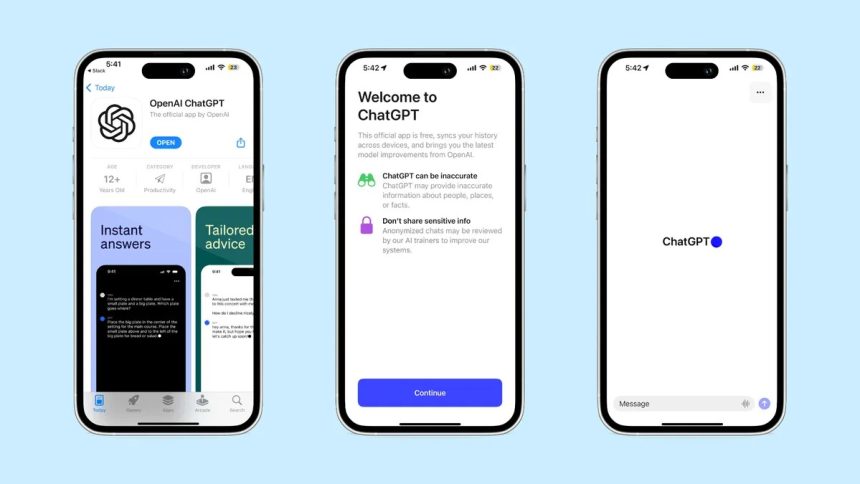On Thursday, OpenAI released a ChatGPT app specifically for iOS devices, allowing users to access the AI chatbot on the go.
The free app is compatible with iPhones and iPads, offering voice input and synchronization of chat history across devices. Similar to the computer version, the iOS app can provide answers to questions, assist with travel planning, generate poems, and more.
OpenAI stated that subscribers to ChatGPT Plus, priced at $20 per month, will enjoy faster response times, early access to features, and the ability to utilize GPT-4 within the iOS app.
The initial rollout of the iOS app is limited to the United States but will expand to other countries in the following weeks. OpenAI also mentioned that an Android version will be available “soon.”
OpenAI initially introduced ChatGPT in November, and in March, they released GPT-4, an updated version of the underlying large language model powering the ChatGPT chatbot. According to OpenAI, GPT-4 exhibits fewer flaws, produces more nuanced results, and handles more complex tasks compared to previous versions.
While OpenAI continues to enhance ChatGPT and recently introduced plugins for the chatbot, the company has denied actively working on GPT-5 following an open letter signed by prominent figures such as Elon Musk and Steve Wozniak, urging a pause in AI development due to perceived risks to society.
Microsoft entered the AI chatbot domain in February with Bing AI search, which utilizes ChatGPT. Microsoft also launched widgets for Android and iOS this week. Google subsequently introduced its AI Bard in March, and the waitlist for Bard has been removed, making the service publicly accessible.
Chinese tech giant Alibaba unveiled its own ChatGPT competitor with support for both Chinese and English languages. Additionally, Tesla and Twitter CEO Elon Musk founded an AI company called X.AI.
CNET has conducted a performance analysis of ChatGPT, Bing, and Google Bard to determine the most helpful AI chatbot.
Editor’s note: CNET is utilizing an AI engine to generate certain personal finance explainers, which are then edited and fact-checked by human editors. For more information, refer to the provided post.








